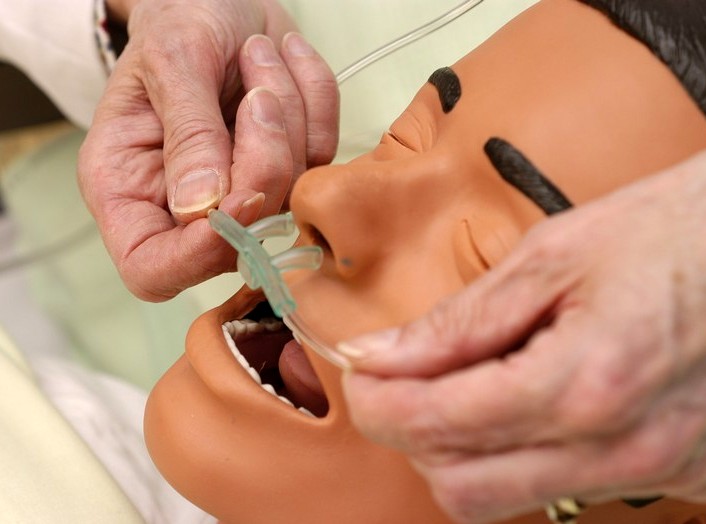
Image Source: Google
Proper nasal cannula placement is crucial for ensuring patient comfort and maximizing the effectiveness of oxygen therapy. The nasal cannula is a small, lightweight device that delivers supplemental oxygen through two prongs that are placed in the patient's nostrils.
It is commonly used in hospitals, clinics, and home settings to provide oxygen to patients with respiratory conditions. You can also contact Applied Medical Technology if you need more information about proper nasal cannula placement.
One of the key secrets to perfect nasal cannula placement is understanding the anatomy of the nose. The prongs of the cannula should be inserted into the patient's nostrils at a depth of approximately 1-2 centimeters. The prongs should be angled downwards to avoid irritating the nasal septum and upper airway. It is important to ensure that the prongs are not inserted too deeply, as this can cause discomfort and potential injury.
Another important factor in achieving optimal nasal cannula placement is selecting the appropriate size cannula for each patient. Nasal cannulas come in various sizes, ranging from pediatric to adult. Using a cannula that is too small can lead to inadequate oxygen delivery, while using one that is too large may cause discomfort and pressure sores.
In addition to selecting the correct size cannula, it is important to ensure that the prongs of the cannula are properly positioned in the nostrils. The prongs should sit comfortably in the patient's nostrils without causing any distortion or pressure. If the prongs are too tight or too loose, they may cause discomfort or lead to oxygen leakage.
Ensuring proper nasal cannula placement is not only important for patient comfort but also for maximizing oxygen therapy efficiency. When the cannula is correctly positioned, the patient can receive the required amount of oxygen without any obstruction. This leads to improved oxygenation and better respiratory function. Proper placement also helps minimize oxygen waste and reduce the risk of complications.
One technique that can be used to improve cannula placement is the use of securement devices. These devices are designed to hold the cannula in place and prevent it from slipping or moving during use. There are various types of securement devices available, including adhesive tape, gel pads, and clip-on devices.
Regular assessment and monitoring of the patient's nasal cannula placement are essential. Healthcare providers should routinely check the position of the cannula during patient care activities and adjust it as needed. They should also assess the patient for any signs of discomfort, skin breakdown, or oxygen deprivation.
In conclusion, achieving perfect nasal cannula placement is crucial for boosting patient comfort and efficiency in oxygen therapy. Proper understanding of nasal anatomy, selecting the appropriate size cannula, and ensuring correct prong placement are key factors in achieving optimal placement.
The use of securement devices and regular monitoring are also important strategies for maintaining proper cannula position. By implementing these secrets, healthcare providers can enhance patient comfort, improve oxygenation, and promote better respiratory outcomes.
